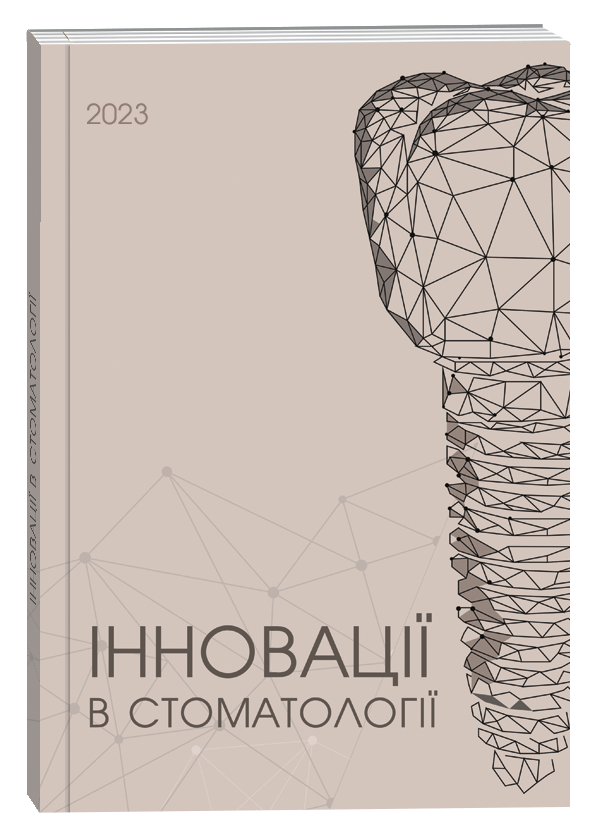ELECTRICAL BURNS OF THE ORAL CAVITY (REVIEW)
DOI:
https://doi.org/10.35220/2523-420X/2025.2.26Keywords:
electrical trauma, oral electrical burns, conservative and surgical treatment, recovery.Abstract
Problem statement. Electrical burns are a fairly rare variant of damage to the oral cavity organs, but their complications are accompanied by a significant deterioration in the quality of life and persistent disability. This problem is practically not covered in modern available domestic sources. Purpose of the study. To highlight the main etiological, diagnostic and therapeutic features of electrical burns of the oral cavity. Materials and methods of the study. Obtaining scientific literature information was performed using the information search systems Scopus, CrossRef, Google Scholar and PubMed. Results and their discussion. Worldwide, electrical burns of the oral cavity account for 2.2% of electrical injuries and only 0.12% of all burns; usually occur in infants who are teething; mostly observed in children due to biting, chewing or sucking electrical conductors and other elements of electrical appliances. Severe cases with hospitalization and surgical treatment are rare. Despitetheir rarity, treatment and long-term rehabilitation make these injuries an important problem in burn care.In severe cases, damage extends to the gums, alveolar process of the chin, oral mucosa and tongue. Early surgery is characterized by an aggressive approach to nonviable or questionable tissue; another tactic is to wait until the extent of the damage is fully determined with subsequent planning of the optimal treatment option. The purpose of oral commissure splinting is to provide a counterforce to the tendency for wound contracture in order to reduce scarring, maintain function, and reduce the need for reconstructive surgery.An important role in preventing a negative functional outcome is played by attention to the rehabilitation of swallowing and speech, and the prevention of all possible consequences depending on the damage to the dental structures. A thorough interdisciplinary approach is important, which is carried out with the participation of an maxillofacial surgeon and a speech therapist. Conclusions. Oral electrical burns are a specific problem in modern pediatric dentistry, and the right diagnostic and treatment option will reduce the possibility of developing long-term complications and disability.
References
Єхалов В., Кравець О., Криштафор Д. Ураження електричним струмом: клінічна лекція. Emergency Medicine (Ukraine). 2022. Т. 18, № 5. С. 18–28. DOI: https://doi.org/10.22141/2224-0586.18.5.2022.1507
Zemaitis M.R., Cindass R., Lopez R.A. Electrical Injuries [Updated 2025 Jan 20]. StatPearls [Internet]. Treasure Island (FL): StatPearls Publishing, 2025. URL: https://www.ncbi.nlm.nih.gov/books/NBK448087/.
Pontini A., Reho F., Giatsidis G. Multidisciplinary care in severe pediatric electrical oral burn. Burns. 2015. Vol. 41, No. 3. P. e41–e46. DOI: 10.1016/j. burns.2014.12.006.
Baig N., Parasrampuria N., Yeshwante B., Tated G. Electrical injuries of the oral cavity: A menace to mankind. Indian Journal of Health Sciences and Biomedical Research (KLEU). 2015. Vol. 8, No. 1. P. 11–17. DOI: 10.4103/2349-5006.158215.
Hagiwara Y., Seki K., Takahashi Y. Oral chemical burn due to accidental ingestion of calcium oxide food desiccant in a patient with dementia. Journal of International Medical Research. 2020. Vol. 48, No. 4. P. 1–5. DOI: 10.1177/0300060520920065.
Suga T., Tu T.T.H., Toyofuku A. Insights into geriatric burning mouth. British Dental Journal. 2025. Vol. 238, No. 12. P. 907. DOI: 10.1038/s41415-025-8901-2.
Koray M., Tosun T. Oral Mucosal Trauma and Injuries [Internet]. Trauma in Dentistry. IntechOpen, 2019. URL: http://dx.doi.org/10.5772/intechopen.81201.
Walsh K., Hughes I., Dheansa B. Management of chemical burns. British Journal of Hospital Medicine. 2022. Vol. 83, No. 3. P. 1–12. DOI: https://doi.org/10.12968/hmed.2020.0056.
Jadhav K.D., Verma J. Burns of oral mucosa – A review. Journal of Dental Specialities. 2022. Vol. 10. P. 43–47. DOI: https://doi.org/10.18231/j.jds.2022.012.
Di Vincenzo M. Quemaduras Eléctricas en Pediatría [Pediatric Electrical Burn Injuries]. Revista Argentina de Quemaduras. 2023. Vol. 33, No. 3. P. 1–7. URL: https:// raq.fundacionbenaim.org.ar/wp-content/uploads/2023/12/quemaduras-faciales.pdf
Garritano F.G., Carr M.M. Oral commissure burns in children. Operative Techniques in Otolaryngology. 2025. Vol. 26. P. 136–142. DOI: http://dx.doi.org/10.1016/j.otot.2015.06.007.
Gentges J., Schieche C. Electrical injuries in the emergency department: an evidence-based review. Emergency Medicine Practice. 2018. Vol. 20, No. 11. P. 1–20. URL: https://pubmed.ncbi.nlm.nih.gov/30358379/.
Umstattd L.A., Chang C.W. Pediatric Oral Electrical Burns: Incidence of Emergency Department Visits in the United States, 1997–2012. Otolaryngology – Head and Neck Surgery. 2016. Vol. 155, No. 1. P. 94–98. DOI: 10.1177/0194599816640477.
van de Warenburg M.S., Riesmeijer S.A., Hummelink S. Burn by battery, the dangers of portable devices − A case report. Burns Open. 2025. Vol. 9, No. 4. Article ID: 100388. DOI: 10.1016/j.burnso.2024.100388.
Verma A., Maria A., Singh A. Case 1: Oral Burns as a Presentation of Accidental Organophosphorus Poisoning in a Neonate. Neoreviews. 2019. Vol. 20, No. 1. P. e37–e40. DOI: 10.1542/neo.20-1-e37.
Sahoo S.R. Thermal Burn at an Unusual Site in the Oral Cavity: A Case Report. Bombay Hospital Journal. 2024. Vol. 66, No. 1. P. 17–18. DOI: 10.15713/ins.bhj.172.
Hoffman R.S., Burns M.M., Gosselin S. Ingestion of Caustic Substances. New England Journal of Medicine. 2020. Vol. 382, No. 18. P. 1739–1748. DOI: 10.1056/ NEJMra1810769.
Yeroshalmi F., Sidoti E.J. Jr., Adamo A.K. Oral electrical burns in children – a model of multidisciplinary care. Journal of Burn Care & Research. 2011. Vol. 32, No. 2. P. e25–e30. DOI: 10.1097/BCR.0b013e31820ab393.








